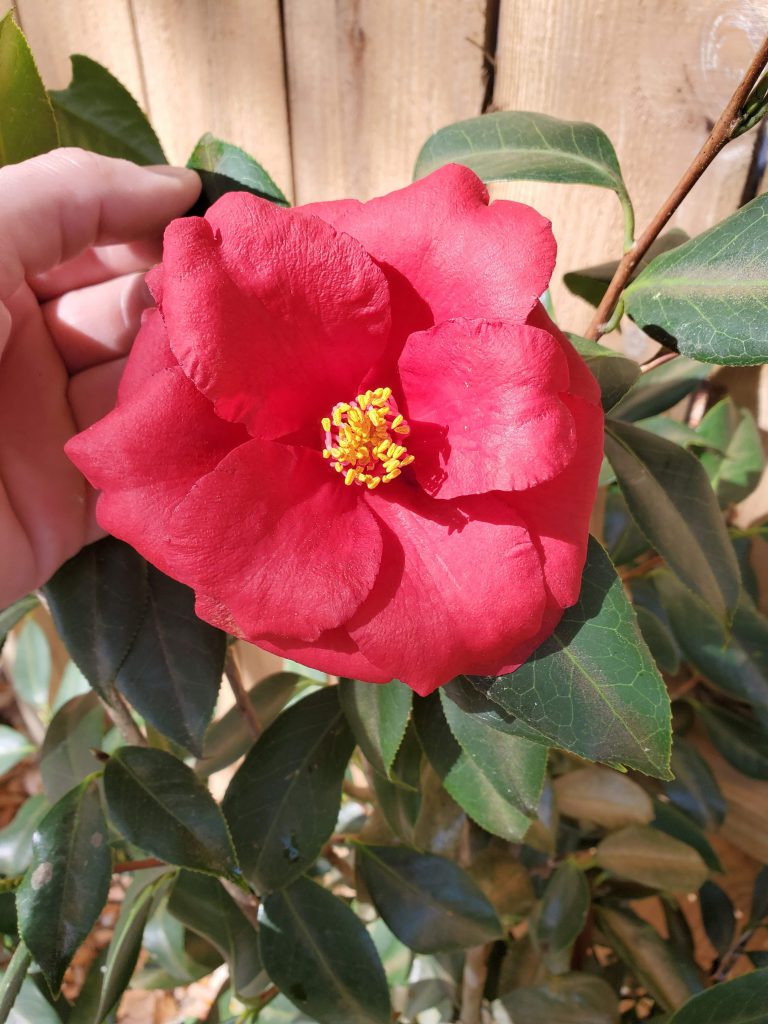Camellia japonica may be the quintessential Southern flowering plant, as it has decorated Southern landscapes with its giant winter flowers for over two centuries at this point. It wasn’t always that way though. The species took a long, winding road to the southern US, where it now enjoys its iconic garden status.
Camellia japonica is a native of the mountainous regions of east Asia. It was from there that “japonicas” were accidentally introduced to Europe in the late 1600s by British tea merchants, who mistook Camellia japonica for its very close cousin, the Tea Plant (Camellia sinensis). After a century-long stay in England, Camellias then made their way to America around 1800. As in England, Camellias were mostly grown as greenhouse flowering plants in the northern United States. However, in 1843, Reverend John Drayton of South Carolina, brought camellias to his home, Magnolia Plantation, and popularized them outdoors in the Charleston area. Many cultivars that are grown today trace their roots back to Rev. Drayton and Magnolia Plantation!
Surviving every gardening fad and landscaping trend, Camellia’s popularity endures today for a couple of reasons. First is their winter flower display. Camellias provide a giant splash of color in an otherwise drab time of the year and there are literally thousands of japonica varieties in nearly every conceivable size, form, and color (provided you like white, pink, purple, and red) – there’s a camellia for everyone! Camellias are also about as low maintenance a plant as can be found in landscapes. It is not uncommon for camellias to persist in yards for generations without any help from gardeners. After the establishment phase, camellias can go decades without supplemental water, fertilizer, or pesticide applications in many cases – especially if they are sited in an ideal spot. Just plant these treasured passalong plants in a spot where water does not stand and that will receive some filtered or afternoon shade and enjoy the annual flowering show!
For more information on growing camellias, sourcing camellia plants for sale, or any other gardening topic, contact your local UF/IFAS County Extension Office. Happy gardening!
- Mulch is a Must in Your Landscape - December 4, 2025
- Tis the Season – Why Winter is the Best Time to Plant Trees and Shrubs - November 26, 2025
- Feeling Blue (Ginger) This Fall - November 13, 2025

